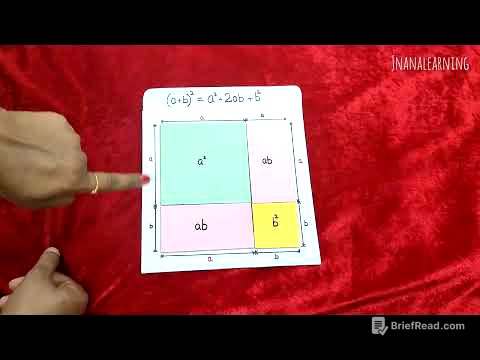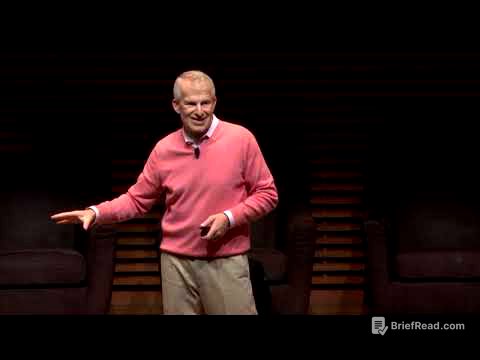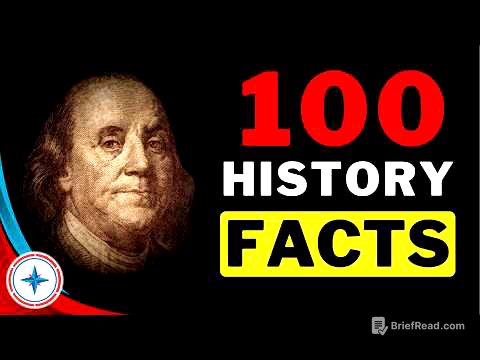TLDR;
This lecture introduces the GK batch, focusing on World Geography, starting with the solar system. It covers the origin of the universe, the Big Bang Theory, galaxies, and the formation of our solar system. The lecture also discusses various celestial bodies, including stars, asteroids, meteoroids, comets, and constellations, differentiating between luminous and non-luminous objects. Finally, it describes the planets in our solar system, categorizing them into terrestrial and Jovian planets, and details each planet's unique characteristics.
- Course introduction and objectives for the GK batch.
- Explanation of the universe's origin and the solar system's formation.
- Detailed discussion of planets, celestial bodies, and related theories.
Introduction to GK Batch and World Geography [0:08]
The lecture starts by welcoming students to the GK batch and outlining the course's focus on World Geography, beginning with the solar system. The instructor addresses common doubts about exam preparation and assures students of comprehensive guidance through separate videos. The course aims to cover SSC-level exams, with classes scheduled from Monday to Friday, and mock exams on Fridays. The approach will mirror previous batches, starting with geography, followed by history, science, and politics. The instructor emphasizes that handwritten notes will be available on the application, updated with new information, and encourages students to commit to completing the course for strong GK preparation.
Origin of the Universe: Big Bang Theory and Galaxies [9:08]
The lecture transitions to the origin of the universe, defining it as all existing matter and space, also known as Cosmus, and introduces cosmology as its study. Astronomy, the branch of science dealing with celestial bodies, is also defined. The Big Bang Theory, explaining the universe's origin from a hot, dense state 13.8 billion years ago, is discussed, noting the ongoing expansion of the universe. George LeMaitre is credited with proposing the theory in 1931. The steady-state theory, an alternative by Fred Hoyle, suggests a constant average density despite expansion. Galaxies, spiral structures containing stars and planets, are introduced, highlighting the Milky Way as our galaxy and its location in the Orion Spur.
Formation of the Solar System and Celestial Bodies [15:11]
The discussion shifts to the solar system's formation, believed to have occurred 4.6 to 4.8 billion years ago from a rotating nebula. Waves caused the nebula to spin rapidly, leading to gravity-induced collapse and the formation of a thin disc. Matter concentrated at the center, creating extreme pressure that initiated nuclear fusion of hydrogen into helium, forming the sun. Remaining matter condensed into planets. Immanuel Kant first proposed this nebula theory in 1755, with improvements by Lap Less in 1796, leading to the Nebula Lap Less Theory. The Earth's age is estimated at 4.5 billion years. The lecture then classifies celestial bodies into luminous (stars) and non-luminous (asteroids, planets, meteoroids, comets, moon), explaining that luminous bodies have their own light, while non-luminous bodies reflect light.
Asteroids, Meteoroids, Comets, and Constellations [25:11]
The lecture explains the differences between asteroids, meteoroids, and comets. Comets, composed of rock, dust, ice, and gas, develop a tail when near the sun due to melting ice. Halley's Comet, last seen in 1986 and expected in 2061, is mentioned. Asteroids are large stones revolving around the sun, while meteoroids are smaller. When a meteoroid enters Earth's atmosphere, it burns up, creating a shooting star. If it survives and hits the surface, it's called a meteorite. Constellations, groups of stars, are discussed, including Ursa Major (The Great Bear or Sapta Rishi) and its asterism, the Big Dipper. Other constellations mentioned are Cassiopeia (W-shaped), Cygnus (cross-shaped), and Orion (R-glass shaped), with their brightest stars.
Planets and Theories of Solar System Origin [35:11]
The lecture revisits theories about the origin of the solar system, highlighting the Planet Simal Hypothesis by Chamberlin and Molton in 1905, which suggests the sun's interaction with other stars influenced the solar system's creation. The focus then shifts to the planets, starting with the Sun, which contains 99% of the solar system's mass and is composed mainly of hydrogen and helium. Sunlight takes 8 minutes and 30 seconds to reach Earth. The Sun's structure includes the corona, chromosphere, and photosphere, with the photosphere being the visible part. India's Aditya L1 mission, launched via PSLV C57, aims to study the Sun from a Lagrange point (L1).
Planets: Terrestrial vs. Jovian [42:36]
The lecture categorizes the eight planets into terrestrial (inner) and Jovian (outer) planets, separated by the asteroid belt between Mars and Jupiter. Terrestrial planets (Mercury, Venus, Earth, Mars) are rocky, have solid surfaces, few rings, and are smaller, with Mercury and Venus having no moons. Jovian planets (Jupiter, Saturn, Uranus, Neptune) are gaseous, larger, have many moons and rings, and lack solid surfaces. Uranus and Neptune are termed "ice giants."
Detailed Look at Mercury and Venus [47:37]
The lecture provides details on individual planets, starting with Mercury, the closest and smallest planet to the sun, completing a revolution in 88 days. Venus is the hottest planet due to its high CO2 content, trapping heat, and has thick clouds of sulfuric acid (H2SO4). Venus is also known as Earth's twin due to similar size and mass, rotates clockwise (retrograde), is the brightest planet, and is called the Morning and Evening Star. Venus has the slowest rotation, with one day lasting 257 Earth days.
Earth and Moon [52:47]
Earth is described as the only planet supporting life, with a blue appearance due to 70% water coverage. It has one natural satellite, the Moon, which is non-luminous. The Moon's rotation and revolution times are equal, so only one side is visible from Earth (about 60%). The far side of the Moon includes the South Pole, where India's Chandrayaan-3 mission successfully landed. The names of the lander (Vikram) and rover (Wisdom), as well as the landing point (Shiv Shakti), are mentioned.
Mars, Jupiter, and Saturn [57:46]
Mars, the "Red Planet," has high iron oxide content. It has two moons, Phobos and Deimos, and features Olympus Mons, the largest volcano and tallest mountain in the solar system. Jupiter, the largest planet, has the shortest rotation period (9 hours and 55 minutes). It has a Great Red Spot, a giant storm, and many moons, including the Galilean moons (Europa, Ganymede, Callisto) discovered by Galileo Galilei. Ganymede is the largest moon in the solar system. Saturn is known for its bright and concentrated rings, discovered by Christian Huygens. The spaces between the rings were discovered by Cassini. Saturn is less dense than water and has the largest moon, Titan, which may support life.
Uranus and Neptune [1:03:46]
Uranus, or Arun, is greenish due to methane content and was discovered by William Herschel in 1781. It's an "ice giant" with a cold atmosphere and rotates clockwise, like Venus. Uranus has at least 27 moons. Neptune is the farthest planet from the Sun and has the slowest revolution, taking 165 years. It is blue and has 14 satellites, including Triton. Uranus is known as the "Rolling Planet" due to its axis being tilted more than 90 degrees.
Dwarf Planets and Solar System Facts [1:09:09]
In 2006, the International Astronomical Union defined criteria for a planet, leading to Pluto's reclassification as a dwarf planet because it doesn't clear its orbit. Other dwarf planets include Eris, Homiya, Makemake, and Ceres. Ceres is located in the asteroid belt, while the others are in the Kuiper Belt beyond Neptune. Pluto has its largest satellite, Charon. Venus is so bright it's also known as Lucifer, the Light Bringer. The lecture concludes with a series of questions to test understanding, covering topics such as planetary characteristics, distances, and discoveries.
Review Questions and Extra Facts [1:15:31]
The lecture continues with review questions, reinforcing key concepts. Supernova is defined as the explosion of a star, while a pulsar is a neutron star. A black hole is a region in space with immense gravity from which even light cannot escape. The Planet Simal Hypothesis by Molton and Chamberlain is mentioned. The lecture addresses questions about the density of planets, the presence of rings, and orbital speeds. It also covers the composition of planetary atmospheres and the Great Red Spot on Jupiter.
Magnetosphere, Wind Planets, and International Space Station [1:36:33]
The Earth's magnetosphere, created by the rotation of the liquid outer core, protects the planet from harmful solar radiation. The Van Allen Radiation Belt is a key component. Neptune is identified as the "windiest" planet due to its lack of surface features. The International Space Station (ISS), a low Earth orbit station, is a collaborative project involving space agencies from the USA, Russia, Canada, Japan, and Europe. It completes one orbit in 93 minutes.
Meteor Showers and Course Information [1:39:59]
Meteor showers, caused by meteoroids burning up in Earth's atmosphere, are discussed. The Lyrids in April and the Quadrantids in late December/early January are mentioned. The lecture concludes with course information, including contact details for queries and a reminder about the availability of PPTs in the private Telegram group. The instructor shares a personal update about potentially relocating to their village permanently.









